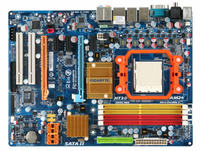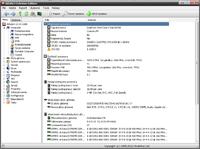I will add from myself that, for example, in the times of Pentium III, the processor had "one phase" power supply, i.e. the so-called. a synchronous converter (two transistors, a coil and several filtering capacitors).
Motherboards for AMD socket A, i.e. old Durons/Athlons XP/Semprons, had from two to three phases. Some manufacturers used four-phase sections in their totally high-end records.
The "madness" probably started with socket 775. Already in 2006, motherboards with 8-phase power supply appeared.
The terminology "+1" etc. appears only in constructions where in the processor, apart from the CPU unit (and FPU, i.e. floating point unit, which has been integrated since the PIII era), there is also a memory controller (and more and more often other systems that could only be integrated

). AMD was the first to integrate the DDR1 controller in the processor in the days of socket 939. Here the controller power supply was indeed separate, but the manufacturers did not call it "+1" (usually this one "phase" was enough to power the HT bus voltage and the entire memory controller).
The whole power supply system is called a converter.
I don't know if this will interest you, but
here you have photos and construction of my converter, made on foot. It is an asynchronous converter (one transistor and it's not even a MOSFET, just a regular NPN bipolar one, instead of the second MOSFET (instead of the bottom one) there is a schottky diode.
If you want to read more about it, as I wrote the password "converter", the wiki has a well-explained principle of operation.
Here I focused on the "history" and building elements, we can expand on the topic if you are interested

my friend Cip has a plus from me, good job! :)
Added after 6 [minutes]: I will return to the main topic, which is what determines the OC of the disc. Often it is also the chipset. Using the example of Intel and a processor with a locked multiplier:
on a board with an old and weak 945PL chipset you can do about 350 MHz fsb, which in combination with a processor that defaults to 333 MHz x 9 is a small increase in performance
on a board with a newer chipset from a better series (more expensive), e.g. P35, P45, X38, etc., you can safely exceed 400-450 MHz, of course, if the specific processor allows it under specific conditions (voltage, temperature).
What else? We are often limited by the lack of certain voltage settings. Equally often, or even more often, we are limited by our memories.
End off top, this is not the answer to the main question, rather as a curiosity and an attempt to encourage overclocking :)
greetings
 .
.



